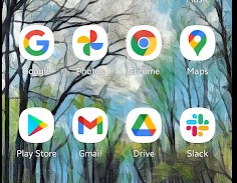
SEO and UX practices have helped to build a solid website foundation for search engine marketing. By adding web accessibility criteria to your requirements, a new layer of human experience design flings open creative marketing opportunities waiting for discovery.
Agencies, design teams, and independent contractors tasked with creating a digital presence on the web face pressures to keep up with rapid changes in how websites are designed and searched for.
It’s like being chased by an angry mob of imagined competitors who somehow have an imaginary crystal ball. And unless you work all day and night, someone will outsmart you and jump ahead in search results or social chatter – or even become the next big brand.
Sometimes, the process of gathering requirements has a way of easing fears. Nobody knows what you want to build and sell better than you do.
But sometimes the foundation building process opens up pandora’s box.
This article is about what happens when you thought the requirements gathering and planning work were finished, or you are looking for new ideas.
Today’s web users want you to meet them on their own turf.
I will be visiting you each month via Search Engine Journal this year instead of bi-monthly because web accessibility is a topic readers are interested in and really need to master to succeed in modern digital marketing. This month, we lead off with:
- Who needs an accessible web?
- Why does accessibility need to be added to your requirements?
Accessibility Guidelines Support Your Foundation
Just yesterday, SEO was king of the mountain. Historically, it had to be the golden egg because the web was there, we were here, and everything in between wanted our attention.
Search engines and directories numbered in the untold thousands when they were free.
It was in our nature, as SEO pros in those days, to outwit and outmaneuver each other by cleverly organizing data or building technology that would do that for us.
Information architecture sustained SEO. And soon enough, usability came splashing in the same puddles by reminding us that people were searching – and people wanted to be satisfied with where search engines dropped them off.
That ride lasted until more segments of the global population gained access to the internet at home, work, and school.
The solid foundations trusted to sustain website information architectures, chatter politely with search engine bots, and entertain website visitors were suddenly missing a whole new unexplored set of requirements called “human experience.”
Think of it this way.
You may have experienced what it’s like to take your attention off the road while driving your car for just a brief moment, and suddenly find yourself drifting past the painted lines or jolted away when someone honks their horn at you.
The painted lines are there to guide you as you travel along the road.
Every browser, programming language, and marketing strategy has established guidelines that help keep some sort of organization and stability on the web. They are our painted lines.
The World Wide Web Consortium (W3C) holds the keys to the web universe. For universal design, accessibility, assistive tech, the mobile web, and upcoming innovative technologies in the AI realm, we rely on the Web Content Accessibility Guidelines (WCAG).
In the creative realm, guidelines are meant to be broken by those of you who want to design really cool stuff without holding back. Parallax and animation, Flash, and talking people sliding onto webpages are frustrating experiments.
But unless challenged, technology would never change. And we wouldn’t be squealing with delight at the next new search engine, animated avatar, or thoughtful assistance developed for us to use in our daily lives.
The best method to stay on track for any new website project is to gather up requirements and monitor changes to guidelines and technology.
That means there is no getting cozy in your job as an SEO, web designer, digital marketer, agency owner, or UX designer.
Accessibility Jobs Soaring
Some of the recent research round-up news in the accessibility industry is focused on the number of ADA lawsuits. While there’s no doubt this is concerning, it is not why web accessibility job openings are everywhere.
The need for accessibility improvements is important for people who need accessible access to online education, jobs, banking, shopping, healthcare appointments, and travel activities.
Whenever I conduct requirements gathering interviews, the first question is, “Who are you building for?”
No one ever says, “People with disabilities.”
Traditionally, people don’t consider people they don’t understand or have experience with.
Companies that are curious are asking questions and creating solutions, which in turn has revved up the job market.
Amazon, Microsoft, IBM, USA Bank, Apple, Google, and Adobe are expanding their accessibility departments.
Twitter, Medium, YouTube, Instagram, and Facebook are encouraging alt text descriptions for images and captions, with podcasts, Zoom, WebEx, and others in hot pursuit with transcripts.
The beauty of meeting the needs of people who may not be able to see, hear, touch, or recall content without assistance is that the ease of use for them is the ease of use for all.
Who Is Your Target Market?
This is the requirement that will befuddle you because there is no one target human user to design for.
For accessibility, we don’t define our target market or user experience by the disability first and person second. Rather, we aim directly towards the human experience.
With human experience as your “Who,” your requirements gathering exercise can reach far beyond limitations and should do so.
For search behavior and information architecture, the research data is astounding. The information sciences community releases a staggering volume of research studies on the various methods for acquiring information and deciding if and when it is useful.
In one study, Gender Identification on Twitter, one of the research questions is, “Can we easily identify terms related to each gender?”
As hard as you try to wrestle control over keywords, search results, competitive knowledge, and social stardom, the absolute rub is that many discoveries on the web happen by accident or outside of purposeful queries.
You may not write down “emotions” as a search behavior.
You may not jot down feelings like “stress” or “grief” as a user requirement.
Emotions are universal human traits that are more likely not going to come up as a business requirement with the CEO or project lead.
In fact, when it comes to including persons with disabilities – or temporary injuries that cause the loss of an ability, or something as common as poor eyesight or trying to work at home while taking pain medications that cause drowsiness –we know someone will tell us to use an overlay or plug-in to catch those use cases.
Overlays attract ADA lawsuits.
The Why Requirement
At its core, accessibility is a civil right back in the USA by the Americans with Disabilities Act (ADA).
The present administration has turned the attention of the Justice Department back to supporting and enforcing the rights of persons with disabilities.
“In late 2021, the DOJ settled enforcement actions with Rite Aid Corporation and Hy-Vee Supermarket Chain regarding the accessibility of their online COVID-19 vaccine registration portals and with the Champaign-Urbana Mass Transit District regarding the accessibility of its public transportation website and mobile apps.
Why designers and digital marketers find joy in their work can be traced to several outcomes other than a weekly paycheck.
It truly matters when a design works well.
The only way to know without any doubt is to add quality assurance (QA) testing as a requirement. Accessibility testing can be added to Agile production cycles and testing with people with different disabilities added to test sprints.
It is more difficult to evaluate emotions and human behavioral responses, but you can ask for this feedback.
Investigate what motivated customers to make a purchase, for example. What triggers word-of-mouth referrals? Was the product line funny? Clever?
Targeting this emotional need can be a “why” requirement.
I know someone who did this in Q4 of 2021 and sold out of products for her brand-new startup. Her products were based on funny storytelling; the kind that makes readers laugh aloud and fire up PayPal.
Your foundation is as strong as your imagination.
Today’s requirements are layers of proven methodologies and courageous experimentation by companies who are not afraid to find out what will help people do more, do better, and just do like everyone else can.
And of course, we find ourselves confused by silly things like icons that look similar in purpose:
Or brand redesigns that make no sense whatsoever:

No foundation is perfect.
It’s a big planet. Someone is waiting for you to build something cool for them.
More resources:
Image source: Shutterstock/MIND AND I







